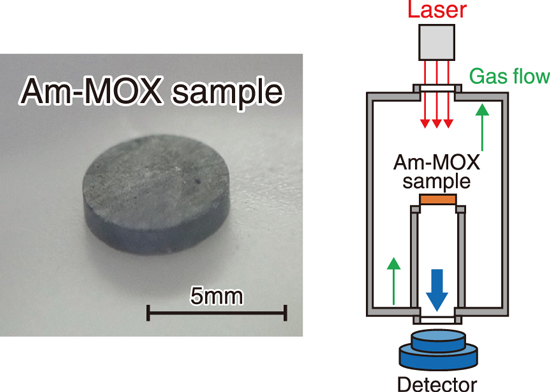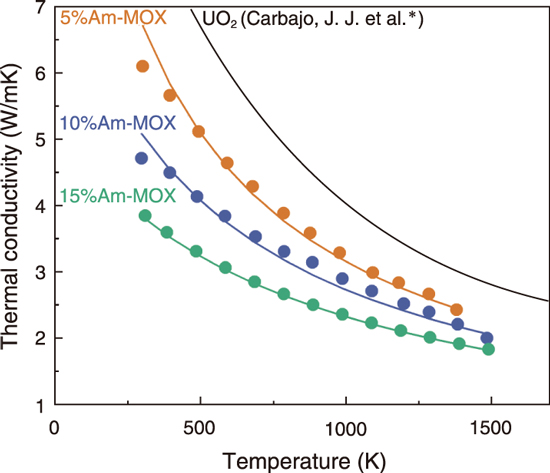
Fig.7-12 Outline of measurement by the laser flash method

Fig.7-13 Thermal conductivity measurement results of Am-MOX and effect of Am content
Minor actinides (MAs) such as americium (Am) in the spent nuclear fuels have long-term radiotoxicity and generate decay heat. It is better to transmute MA into stable or less-radiotoxic nuclides in fast reactors. To reduce the amount of radioactive waste, MA-bearing uranium–plutonium mixed oxide (MOX) fuel has been developed. It is important to understand the effect of MA content on physical properties such as thermal conductivity for analyzing irradiation behavior. Thermal conductivity is an important property for determining the temperature of the fuel center, and this property is considered for preventing fuel melting. There are many reports on MA-MOX fuels with thermal conductivities within 3% Am, but there are no reports on fuels with more than 3% Am with a controlled oxygen-to-metal ratio (O/M).
In this study, three MOX pellets with 5%, 10%, and 15% Am contents were prepared. The thermal conductivity was measured using the laser flash method, depicted in Fig.7-12, in an atmosphere with controlled O/M ratio to the stoichiometric composition during testing. These measurements clarify the effect of Am content on MOX properties and enable more accurate evaluation of the irradiation behavior of Am-MOX. The temperature change of back surface of the sample is measured during testing. The thermal conductivities are calculated by the temperature change and sample characteristic such as density, heat capacity and thickness. In addition, to maintain the stoichiometric O/M ratio, the oxygen partial pressure in the atmosphere was controlled by using H2–Ar mixed gas with moisture. Then, the equation for calculating the thermal conductivity of stoichiometric Am-MOX based on the phonon transport model as a function of Am content was proposed based on the experimental results.
The thermal conductivity results are shown in Fig.7-13. The thermal conductivity of Am-MOX decreased with increasing Am content. The effect of the addition of Am on thermal conductivity was remarkable at low temperatures, and this effect diminished with increasing temperature. Moreover, the calculated and measured thermal conductivities of Am-MOX are in good agreement. Thus, the equations offer a way of evaluating the temperature of fuel center accurately, thereby contributing to the development of MOX fuel design.
As a future plan, we will perform a more comprehensive evaluation and devise the formulation of the physical properties Am-MOX by measuring the thermal conductivity of nonstoichiometric composition for Am-MOX.
This study is a part of the results conducted on “Demonstration research on fast reactor recycling using low decontaminated MA-bearing MOX fuels”, supported by MEXT.
(Keisuke Yokoyama)
* Carbajo, J. J. et al., A Review of the Thermophysical Properties of MOX and UO2 Fuels, Journal of Nuclear Materials, vol.299, issue 3, 2001, p.181-198.